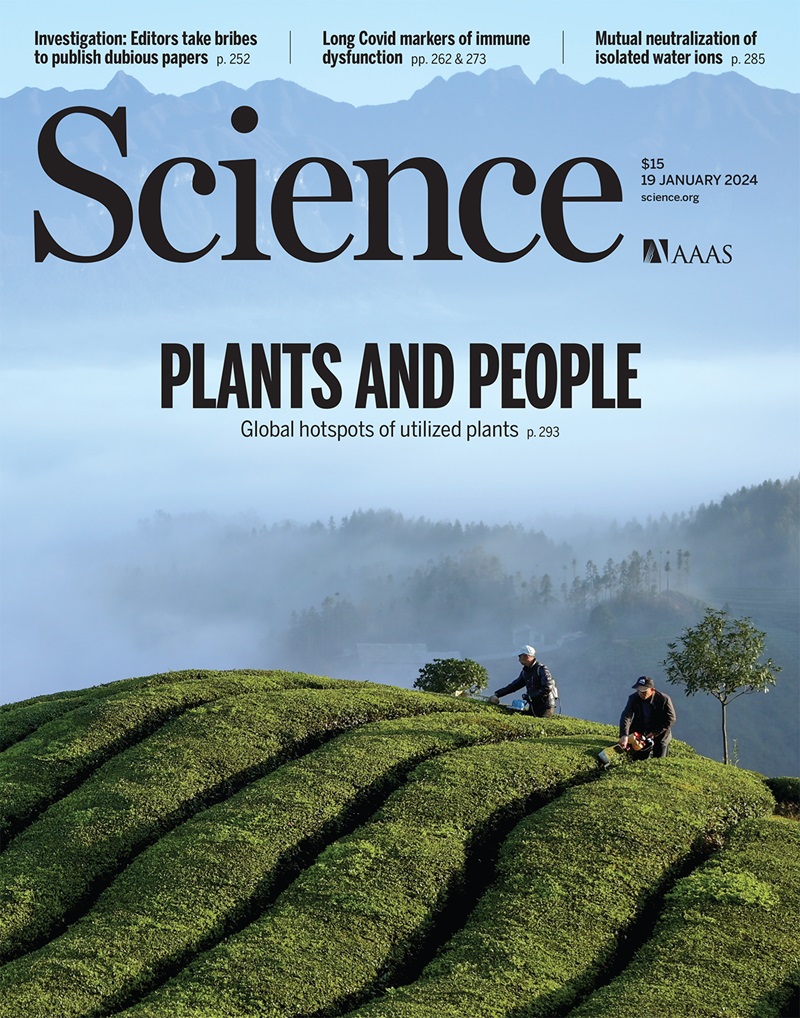Membrane topology inversion of GGCX mediates cytoplasmic carboxylation for antiviral defense
IF 45.8
1区 综合性期刊
Q1 MULTIDISCIPLINARY SCIENCES
引用次数: 0
Abstract
Mitochondrial antiviral signaling protein (MAVS) is an adaptor involved in antiviral immunity, but its regulation is not fully understood. We identified carboxylation of MAVS by vitamin K (VK)–dependent γ-glutamyl carboxylase (GGCX), which was unexpected owing to the reported membrane topology of GGCX. We found that GGCX could undergo topology inversion to carboxylate MAVS within the cytoplasm. This carboxylation enhanced the ability of MAVS to induce type I interferons while suppressing the induction of apoptosis. Genetic knockout of GGCX, a VK-free diet, or depletion of VK by inhibiting VK epoxide reductase 1 with warfarin increased viral susceptibility in mice. Thus, we identified a MAVS regulatory mechanism—the existence of cytoplasmic protein carboxylation and topological inversion of GGCX—and demonstrated how modulating VK levels may influence antiviral defense.
GGCX的膜拓扑倒置介导细胞质羧化,用于抗病毒防御
线粒体抗病毒信号蛋白(MAVS)是参与抗病毒免疫的适配体,但其调控机制尚不完全清楚。我们发现了维生素K (VK)依赖性γ-谷氨酰羧化酶(GGCX)对MAVS的羧化作用,由于报道的GGCX的膜拓扑结构,这是意想不到的。我们发现GGCX可以在细胞质内进行拓扑反转以羧酸化MAVS。这种羧基化增强了MAVS诱导I型干扰素的能力,同时抑制了细胞凋亡的诱导。基因敲除GGCX,不含VK的饮食,或通过华法林抑制VK环氧化物还原酶1来消耗VK,会增加小鼠的病毒易感性。因此,我们确定了MAVS的调控机制——细胞质蛋白羧化和ggcx的拓扑倒置,并证明了调节VK水平如何影响抗病毒防御。
本文章由计算机程序翻译,如有差异,请以英文原文为准。
求助全文
约1分钟内获得全文
求助全文
来源期刊

Science
综合性期刊-综合性期刊
CiteScore
61.10
自引率
0.90%
发文量
0
审稿时长
2.1 months
期刊介绍:
Science is a leading outlet for scientific news, commentary, and cutting-edge research. Through its print and online incarnations, Science reaches an estimated worldwide readership of more than one million. Science’s authorship is global too, and its articles consistently rank among the world's most cited research.
Science serves as a forum for discussion of important issues related to the advancement of science by publishing material on which a consensus has been reached as well as including the presentation of minority or conflicting points of view. Accordingly, all articles published in Science—including editorials, news and comment, and book reviews—are signed and reflect the individual views of the authors and not official points of view adopted by AAAS or the institutions with which the authors are affiliated.
Science seeks to publish those papers that are most influential in their fields or across fields and that will significantly advance scientific understanding. Selected papers should present novel and broadly important data, syntheses, or concepts. They should merit recognition by the wider scientific community and general public provided by publication in Science, beyond that provided by specialty journals. Science welcomes submissions from all fields of science and from any source. The editors are committed to the prompt evaluation and publication of submitted papers while upholding high standards that support reproducibility of published research. Science is published weekly; selected papers are published online ahead of print.
 求助内容:
求助内容: 应助结果提醒方式:
应助结果提醒方式:


